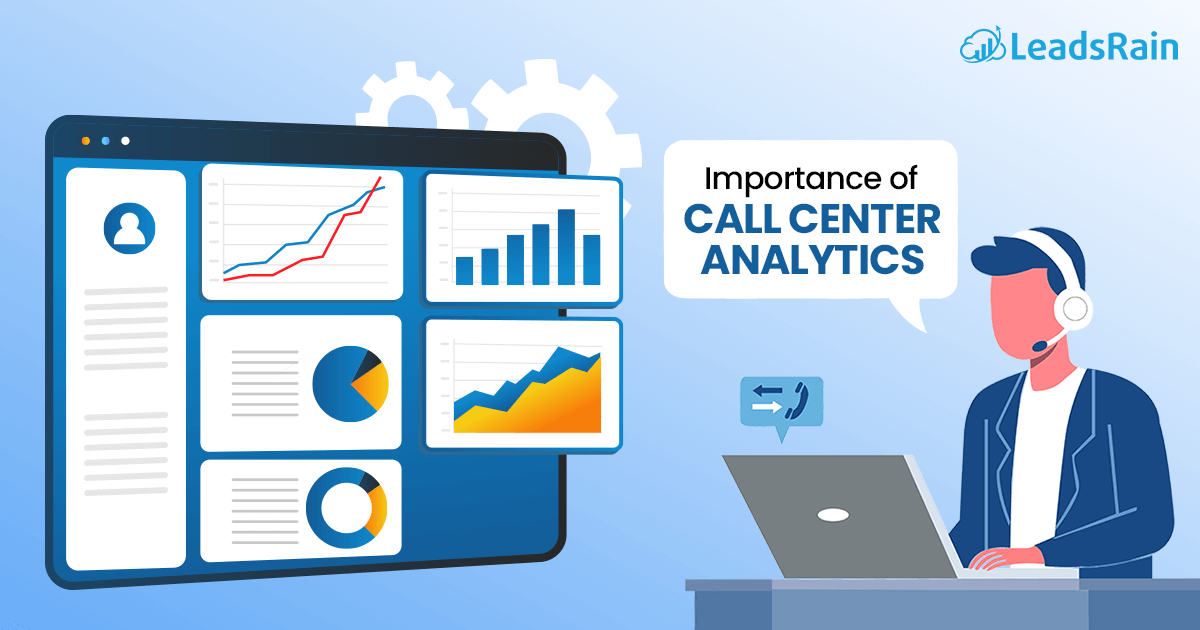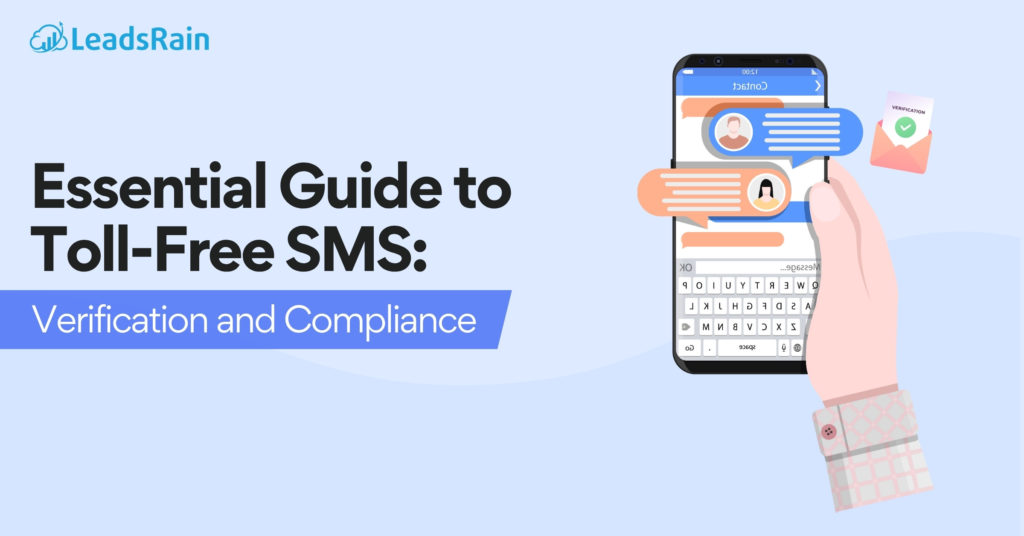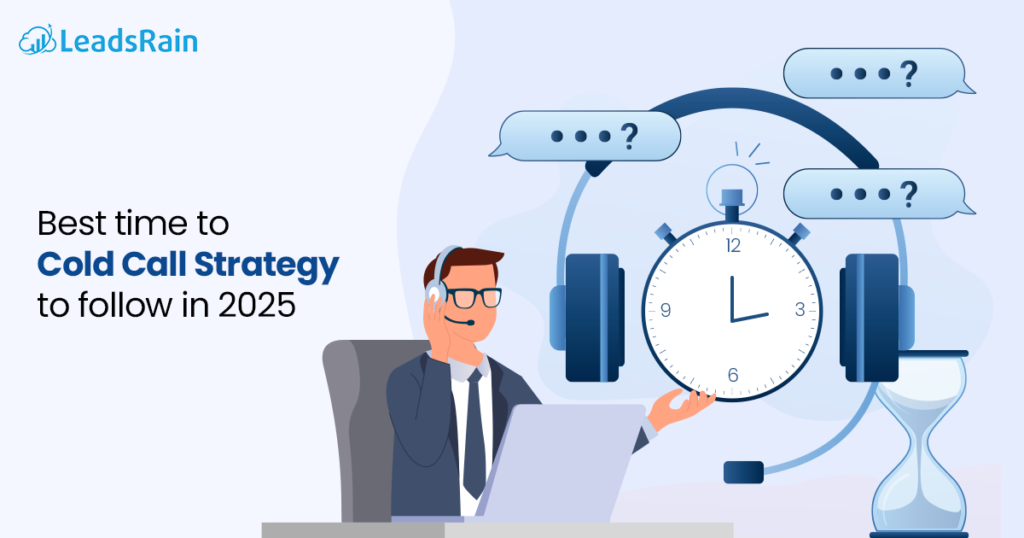Call centers that operate without analytics face numerous challenges, from inefficient agent performance to poor customer experiences. Without the ability to measure key metrics like call resolution rates and customer satisfaction, businesses are left in the dark about how to improve service quality. As customer interactions grow more complex and expectations increase, the need for data-driven insights becomes crucial for staying competitive.
Call center analytics offer solutions to these problems by providing detailed insights into every aspect of call center operations. With data on agent performance, customer preferences, and workflow bottlenecks, businesses can make informed decisions that boost efficiency and customer satisfaction.
In this article, we will explore the importance of contact center analytics, different types of call center analytics, best practices, and how LeadsRain enhances call center analytics for superior results.
What is Call Center Analytics?
Call center analytics involves gathering, evaluating, and interpreting data that comes from customer interactions within a call center. This data includes a range of metrics such as average call duration, customer satisfaction levels, first-call resolution rates, and agent performance. These analytics give businesses a clear view of how efficiently their call center is functioning and highlight areas that need attention.
Call centers can use advanced tools to track customer behavior patterns, identify common issues, and monitor agent performance. Analyzing this data allows companies to make informed decisions to improve service quality, boost efficiency, and address challenges before they become bigger issues.
Call center analytics reveal hidden trends and opportunities that can enhance customer experience and operational performance, making them an essential component of modern customer service strategies.
Types of Contact Center Analytics
Contact center analytics can be categorized into various types, each offering unique insights into different aspects of call center performance. These analytics allow businesses to understand better customer interactions, agent efficiency, and overall service quality. A well-rounded approach to analytics helps businesses improve current operations, forecast trends, and adapt to evolving customer demands.
Below are the key types of contact center analytics that are critical for optimizing performance:
1. Speech Analytics
Speech analytics focuses on extracting data from recorded conversations between agents and customers. Using technologies like natural language processing (NLP) and machine learning, this method identifies keywords, emotions, and sentiment in customer speech. Companies can use this data to uncover customer pain points, measure satisfaction, and even monitor compliance in real-time. It also enables proactive issue resolution by analyzing tone and emotion.
2. Interaction Analytics
Interaction analytics covers all forms of communication, including phone calls, chat, email, and social media interactions. Businesses gain a holistic view of customer journeys using consolidated data from multiple channels. This multi-channel approach enables companies to spot recurring problems, streamline communication processes, and ensure consistent service delivery across all platforms.
3. Performance Analytics
Focused on agent metrics, performance analytics track key performance indicators (KPIs) such as call resolution time, customer satisfaction scores, adherence to scripts, and number of calls handled. This type of analytics provides real-time insights into individual agent productivity and team efficiency, enabling managers to identify top performers, as well as those in need of additional training or support.
4. Predictive Analytics
Predictive analytics uses historical data and machine learning algorithms to forecast future trends. It helps contact centers anticipate customer needs, predict call volumes, and plan resources more effectively. Companies can use this form of analytics to develop personalized customer experiences, optimize staffing levels, and reduce wait times, enhancing overall service delivery.
5. Text Analytics
This involves analyzing written communications, such as emails, chat logs, and social media messages. Text analytics can identify recurring themes, customer sentiment, and emerging issues by processing and interpreting written content. It allows businesses to uncover hidden insights in textual data, improving customer support through an enhanced understanding of customer needs.
Why is Contact Center Analytics so Important?
Contact center analytics play a pivotal role in transforming raw data into actionable insights, enabling businesses to optimize their operations, improve customer satisfaction, and drive overall performance. In a world where customer expectations are continuously rising, the importance of leveraging analytics cannot be overstated.
AI-Powered Predictive Insights
Through machine learning and predictive analytics, contact centers can forecast customer behaviors and call patterns. These insights empower businesses to anticipate demand surges, proactively resolve customer issues, and predict agent performance trends. Predictive analytics also help identify high-risk customer segments, allowing targeted interventions before customer churn occurs.
Enhanced Customer Experience
One of the primary reasons contact center analytics is essential is its ability to enhance the customer experience. In a contact center, every interaction matters, and analytics provide real-time insights into customer preferences, behaviors, and pain points. Through tools like speech and interaction analytics, companies can track customer sentiment, identify issues early, and even predict future needs. This allows agents to deliver more personalized and relevant service, resulting in higher satisfaction rates.
Data-Driven Performance Optimization
Contact center analytics offer precise, real-time data on agent and operational performance. This data enables accurate benchmarking against KPIs, such as average handling time, call resolution rate, and queue abandonment rates. Using these metrics, managers can make informed adjustments to workflows and agent assignments, enhancing overall performance and efficiency.
Workforce Optimization
Through predictive workforce analytics, contact centers can model staffing needs based on expected call volumes and interaction complexity. These models are driven by historical data, AI-powered forecasts, and real-time monitoring, which help minimize understaffing or overstaffing scenarios and ensure resource optimization.
Compliance Monitoring and Risk Mitigation
Analytics systems monitor compliance in real time, using automated tools to scan for sensitive keywords or deviations from regulatory standards. This minimizes legal risks, ensures adherence to industry regulations, and provides clear audit trails for accountability in customer interactions.
Omni-Channel Integration and Data Correlation
Contact center analytics integrate data across multiple communication channels—voice, chat, email, and social media—allowing for a holistic view of customer interactions. This unified view ensures consistency across channels, and data correlation from various sources highlights gaps or friction points in customer service journeys.
Advanced Personalization Through Behavioral Data
Behavioral analytics offer deep insights into individual customer preferences and patterns, enabling hyper-personalized service. Also, with the help of segmented customer lists based on interaction data, agents can deliver tailored responses that enhance engagement and satisfaction, while also improving cross-sell and up-sell opportunities.
Best Practices for Contract Center Data Analytics
Implementing contact center analytics effectively requires a strategic approach to ensure accurate insights and actionable outcomes. Best practices help businesses harness the full potential of their analytics systems, enabling improved decision-making, streamlined operations, and enhanced customer satisfaction.
Here, we have identified and listed some of the essential best practices to follow when leveraging contact center analytics:
- Ensure data from all communication channels (voice, chat, email, social media) is fully integrated for a comprehensive view.
- Regularly monitor KPIs like Average Handling Time (AHT), First Call Resolution (FCR), and Customer Satisfaction (CSAT) to track performance.
- Use real-time analytics for immediate insights and agile decision-making during live customer interactions.
- Apply machine learning and predictive models to forecast trends and optimize staffing levels efficiently.
- Focus on agent performance analytics to identify areas of improvement and design targeted training programs.
- Leverage sentiment and speech analytics to gauge customer emotions and enhance service personalization.
- Automate compliance monitoring to ensure adherence to regulations and reduce legal risks.
- Continuously update analytical models and processes to adapt to changing customer needs and operational demands.
Wrapping it up
Utilizing contact center analytics is essential for driving excellence in customer service and optimizing operational efficiency. With the right insights, your team can improve performance, quickly address challenges, and provide personalized experiences that truly resonate with your customers.If you’re interested in discovering how analytics can elevate your call center to new heights, we’re here to help! Reach out to us at support@leadsrain.com




